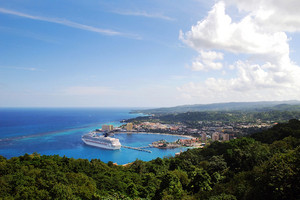
Just say the name “Jamaica” and evocative images spring to mind. From pristine beaches to the magnificent Dunn’s River Falls, it’s also the birthplace of Bob Marley and Usain Bolt, as well as famous for Red Stripe Beer and the Rastafari religion. Just beyond the sparkling tourist-filled resorts of this island nation, however, is a mysterious interior landscape which few visitors know exists. It’s called Cockpit Country, one of the Caribbean’s last remaining reserves of pristine wilderness and contiguous rainforests.
Described by the English missionary, William Knibb, as “one of the most lovely spots on earth”, Cockpit Country nestles in the west of Jamaica, just an hour south of the north coast towns of Falmouth and Montego Bay. Its history dates back to the Maroon Wars of the 1700s; it was the mountain stronghold of the Leeward Maroons, escaped slaves who fought for, and gained, independence from British rule in 1739. Cockpit Country’s name, however, is part derived from a spectacular landscape, referred to by geologists as “cockpit karst”. It’s an alien-like pockmarked terrain of irregular star-shaped hollows, some more than 300 feet deep, surrounded by steep, conical hills and ridges, and closed valleys eroded from limestone bedrock.
This island-within-an-island interior of Jamaica is blessed with unusual biological diversity, crisscrossed by hiking trails, and home to at least 66 endemic plant species, as well as reptiles, frogs, fireflies, and click beetles known as “peeny wallies”. It’s also a last refuge for a number of rare and endangered species which have been driven from the rest of the country by humans and development. Among them is the Black-billed parrot, a small bird whose ancestors hail from the South American rainforest, possessing a green plumage and a liking for high pitched screeching in mid-flight. Another is the Jamaican Giant swallow-tail butterfly, the largest of its species in the western hemisphere. Dark in colour with spectacular markings of yellow and blue bands and spots, the average wingspan of an adult stretches to nearly six inches. There’s also the Jamaican yellow boa, a colourful nonvenomous snake and the island’s largest predator, which can grow to more than six feet in length.
In 1994 it was proposed that Cockpit Country should be zoned a World Heritage Site, a move to protect its unique landscape, fauna and flora under threat from nearby bauxite mining. As the debate rages on still, however, it’s all there for visitors to Jamaica to enjoy, a natural paradise like no other offering an alluring alternative to the sun, sand and water for which the island paradise is famous.
- By:
- Joanna Hall








